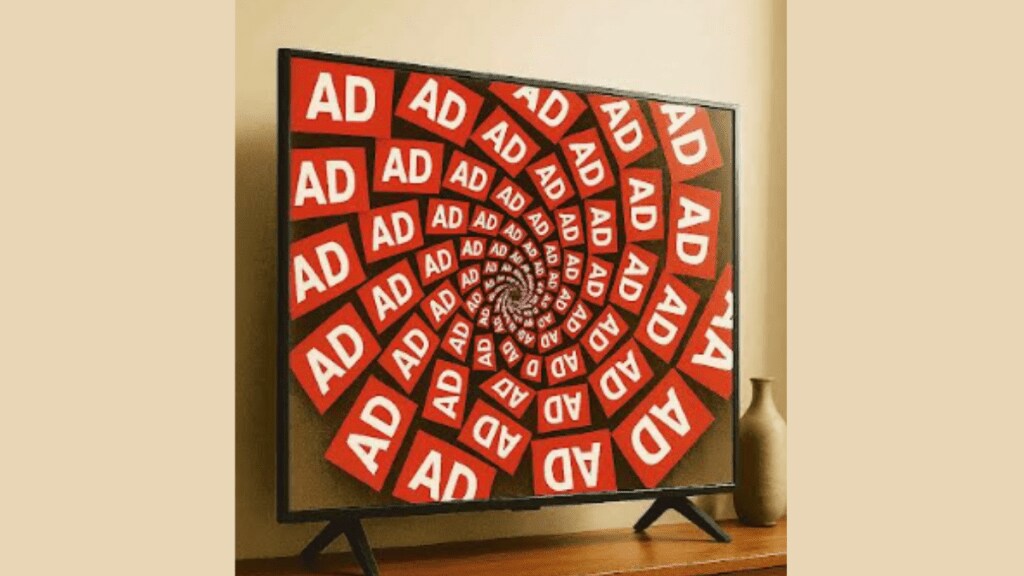Grabbing the attention of consumers is nothing short of an arms race for brands. You stockpile on compelling pieces of advertising and carpet bomb via broadcast channels. If 70% of the messaging is avoided or ignored by the target audience, you make peace with it.
But consumers are getting increasingly annoyed and opting out through avoidance mechanisms. And when all that fails they are venting their ire through social channels. That’s exactly what happened this 2025 season of the Indian Premier League (IPL). As the ball started rolling, marketers began bombarding audiences with advertisements from every corner of the screen so much so that some brands — such as My11Circle, Parle Marie and Kamla Pasand — had to hit the pause button thanks to audience pushback.
The episode brought to the fore a subject that has plagued advertising for years: How do you get consumer eyeballs but prevent ad fatigue? TAM Sports reports Parle Biscuits and KP Pan foods, the maker of Kamla Pasand, together accounted for 12% of the ad volumes during most of the tournament, which meant their ads appeared more frequently than that of other brands during the league.
According to a 2024 report by Publicis, close to 25% of ad budgets are wasted by advertising that is displayed repeatedly to the same viewer. When TV and connected TV (CTV) campaigns are planned separately, the report says that there is a high likelihood of overlapping audiences and duplication of ad exposures. So how should marketers walk the tightrope between getting maximum eyeballs while also avoiding overkill?
Nikhil Rangnekar, CEO at Media Circle, says one of the ways to manage ad frequency is by creating a single source data model encompassing all audiovisual platforms such as TV, CTV, OTT and YouTube.
“This kind of data helps brands understand cross media audience duplication and optimises plans for reach as well as frequency. In the absence of such data, brands can deconstruct their current plans to identify inflexion points where reach at the desired frequency starts plateauing, and add media vehicles that build incremental reach and frequency,” says Rangnekar.
At a time when campaigns run across different consumer touchpoints such as social media or e-commerce, the risk of ad fatigue increases even more and that works against brands, say experts. Prashant Puri, CEO & co-founder of AdLift (Liqvd Asia), emphasises the need for a cross-channel strategy. The message needs to evolve as the consumer moves across touchpoints with better sequencing and a cohesive story across platforms.
Puri adds that top-of-mind recall is not a guarantee of consumer consideration for a brand. “To drive consideration, you need to connect emotionally and contextually. That starts with sharper audience segmentation and more personalised narratives. One-size-fits-all doesn’t work anymore. Use behavioural insights to tailor messages that resonate with where your audience is in the funnel—awareness content for some consumers, product benefits for others. Consideration happens when the messaging feels made for me, not for everyone,” he points out.
Need for testing
Large ad budgets and purchase of inventory alone will not build brands or drive consideration, the goal of most marketing initiatives. Experts lament that advertising today often lacks compelling narratives. Further, despite its proven ability to drive better outcomes, ad testing remains underused.
Brands tend to waste significant media investment on ads that fail to connect. That’s where ad testing comes in. Kantar data shows that a strong creative is over four times more likely to drive ROI. “Untested ads risk underperforming on both sales and brand equity, while poor execution or repetition can lead to fatigue and long-term erosion. With frequency capping across all media channels still a challenge, pre-testing becomes critical to avoid overexposure,” notes Soumya Mohanty, MD and CCO, South Asia, insights division, Kantar.
In a country as diverse as India, campaigns that aren’t tested for cultural and linguistic nuances risk misalignment and missed impact across regions. According to Siddharth Devnani, co-founder and chief operating officer, SoCheers, brands that use past learnings are able to develop better strategies that deliver results. The problem is, many marketers opt for live testing instead of thorough pre-testing. “While speed is important, it’s essential to avoid overlooking optimisation opportunities. Marketers must balance quick execution with solid strategic planning to ensure effectiveness,” says Devnani, noting that in most cases, time for testing is not budgeted. Brands expect to go live almost immediately after the creative is approved.
“If we have the luxury of time, testing data will always incrementally improve the performance; else we stick to performance reported from prior similar campaigns as well as competition and platform benchmarks,” he adds. Kantar’s Mohanty says newer testing solutions like LINK AI and Digital LINK can deliver fast, scalable insights that seamlessly fit today’s creative workflows.

